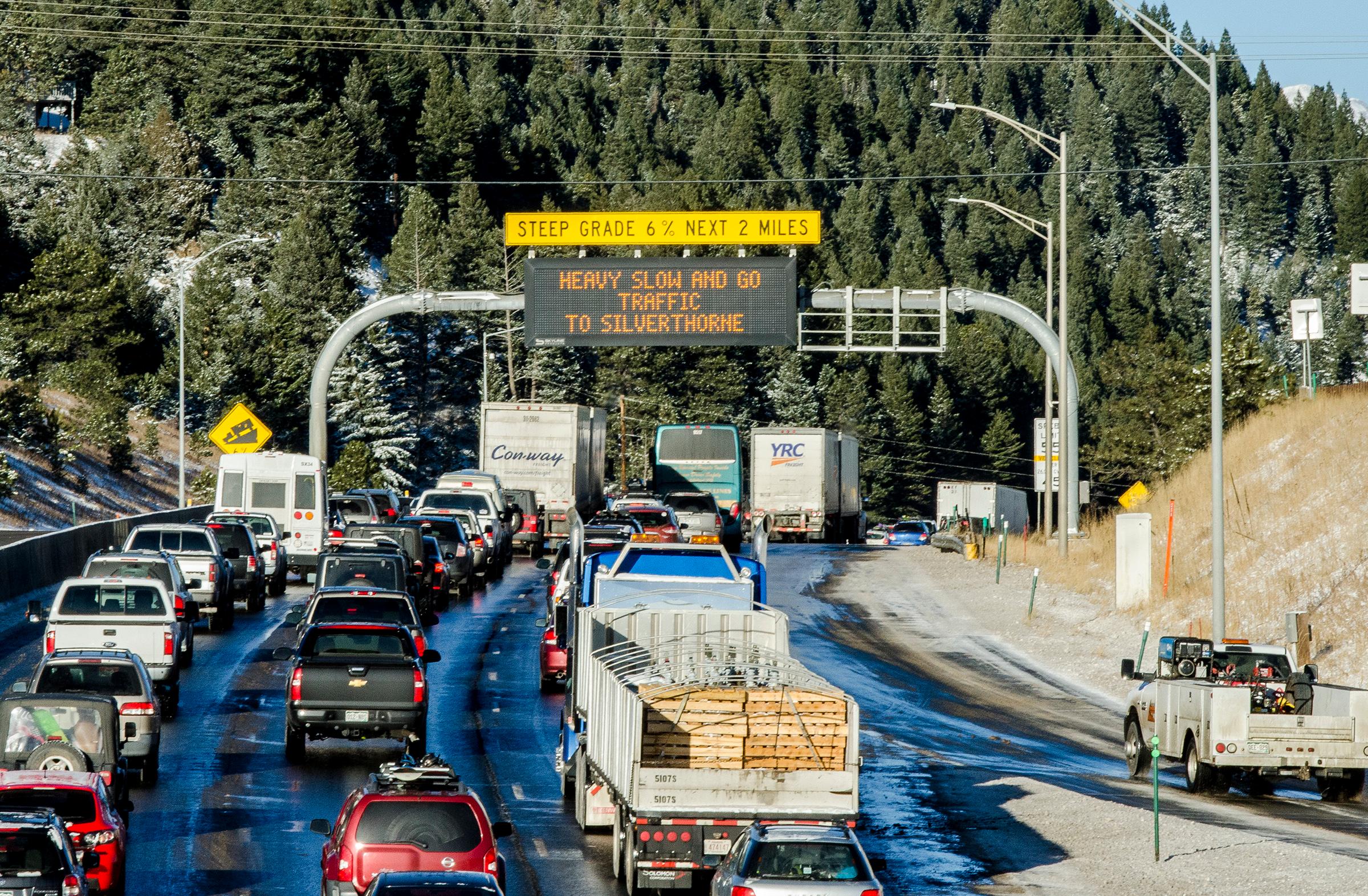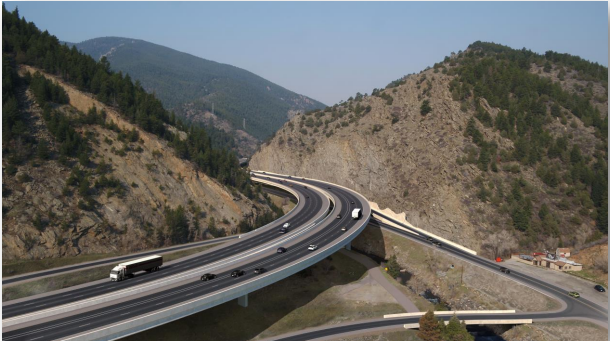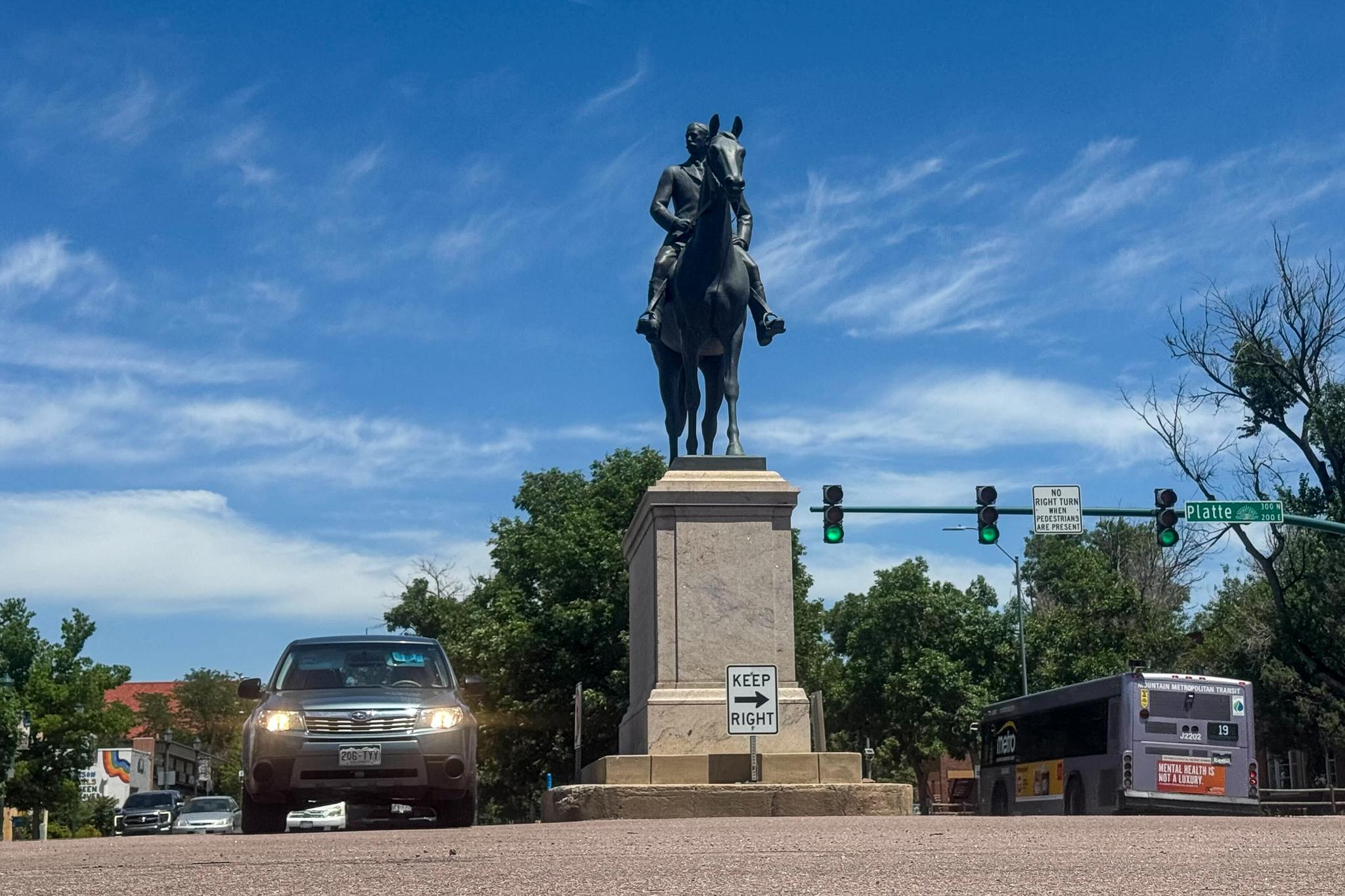
An expansion of Interstate 70 at Floyd Hill, where paralyzing traffic often kills dreams of a quick drive from Denver to ski country in Summit County and beyond, could be under construction as early as 2023.
The Colorado Department of Transportation has been preparing a revamp of the bottleneck about 30 miles west of Denver for years. The project would add a third travel lane (which could be tolled), a bicycle path and new wildlife crossings. It would also replace two aged bridges and improve some interchanges.
"This project has been our absolute top priority project for many, many years now,” I-70 Coalition Executive Director Margaret Bowes told the Colorado Transportation Commission this week.
Bowes said Floyd Hill is now the most significant pinch point between Summit County and Denver, pointing to research her group commissioned that showed about two-thirds of frequent I-70 travelers have decreased their trips because of congestion.
"That translates to a real economic impact,” she said.

I-70 is also a major east-west freight corridor, and the rebuild could take traffic off of nearby U.S. 6 and 40, CDOT staff said.
The project is still in the environmental review process. The design has been narrowed to two main alternatives: One would blast a tunnel for westbound lanes at the bottom of the hill, while a second would elevate both directions of traffic onto viaducts through Clear Creek Canyon.
Staff are leaning toward the latter, said CDOT Executive Director Shoshana Lew, because it would avoid the complications of tunneling and could be cheaper.
"There's a lot of benefits folks are seeing to the viaduct option,” Lew said.
"Don't get focused on the tunnel," CDOT chief engineer Steve Harelson told commissioners who expressed concerns about the tunnel. "It's not where we are right now."
CDOT expects a final design decision to be made later in 2021, with land acquisition beginning in 2022 and construction starting early in 2023.

But money is still an issue. CDOT has identified about $350 million of the $450 million needed for the first phase of the project. A second, $250 million phase, which would add a frontage road and flatten a curve on eastbound lanes, also still needs funding.
It’s possible costs could fall as the design tightens up, Harelson said. In the meantime, CDOT’s High-Performance Transportation Enterprise, which the legislature set up in 2009 to work around Taxpayer’s Bill of Rights restrictions, is leading a study to try to close the funding gap.
Voters passed the TABOR in 1992, which has limited funding to all forms of government, including CDOT, ever since. One of CDOT’s largest income sources is the state gas tax, which hasn’t risen since 1991.
Financing options include federal loans, toll-backed bonds and a public-private partnership, among others. CDOT and its enterprises also have to weigh their obligations to other projects, like an expansion of Interstate 270 and the ongoing rebuild of Interstate 25 in Pueblo.
"The sooner we can get going with some sort of funding plan the better,” said HPTE Director Nick Farber, noting that borrowing interest rates are extremely low right now.
The commission could make a decision on funding as soon as January.









